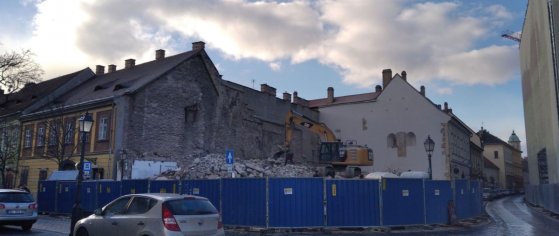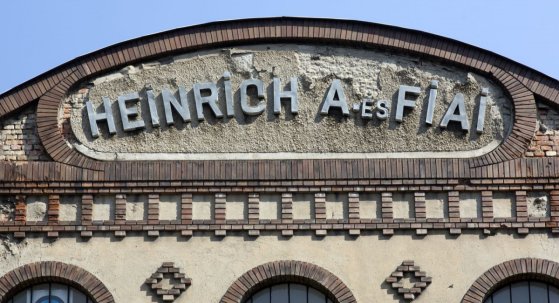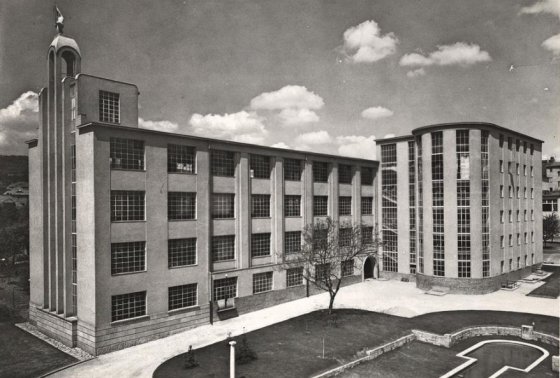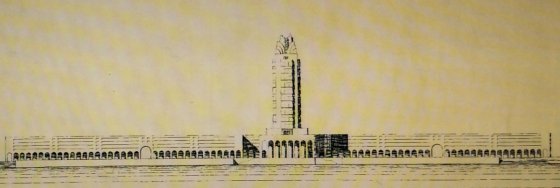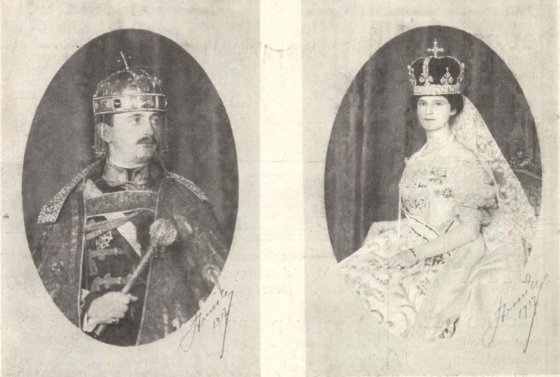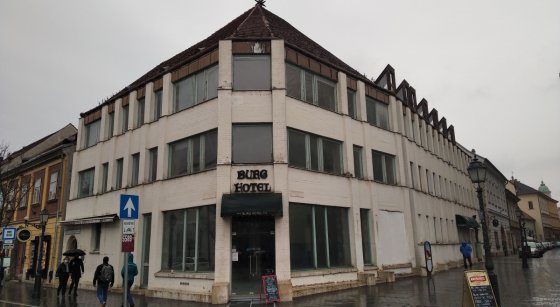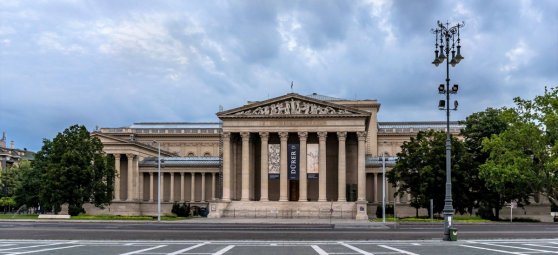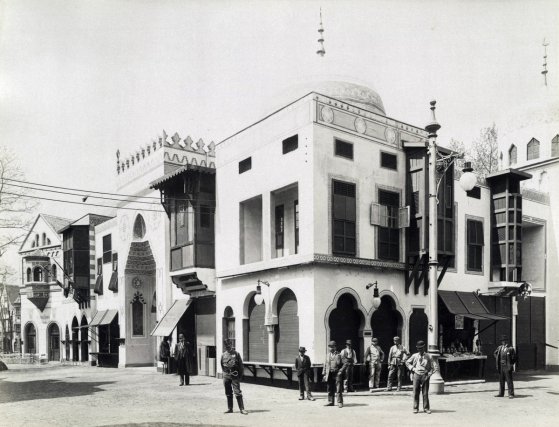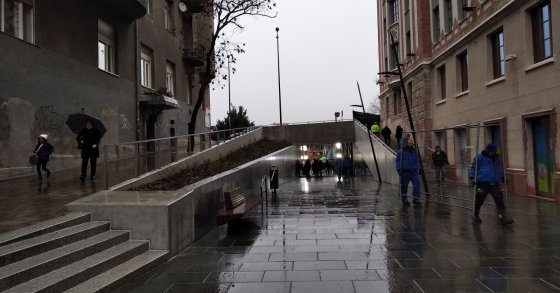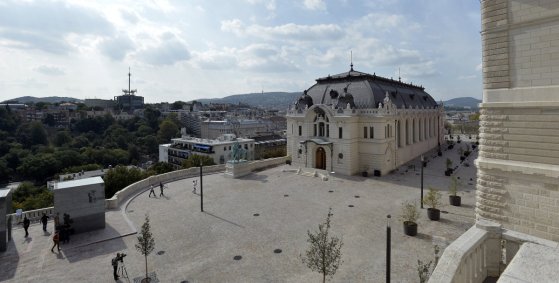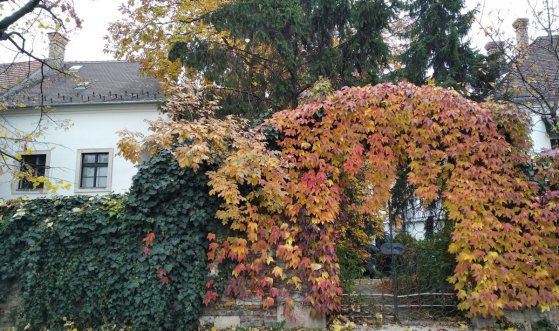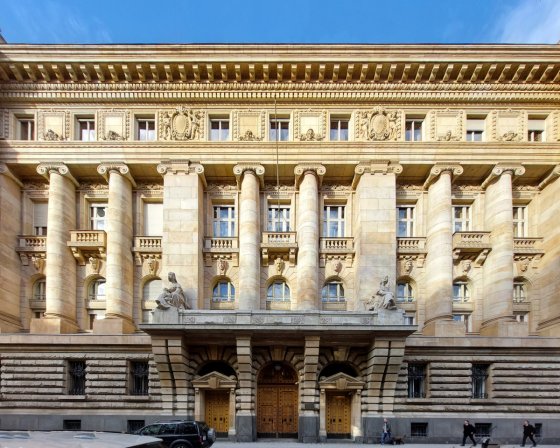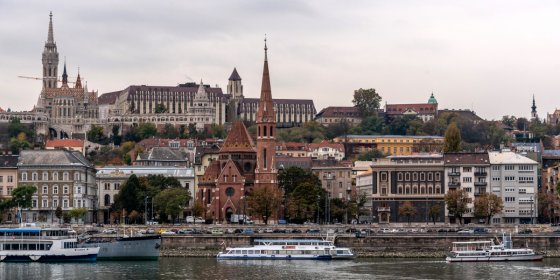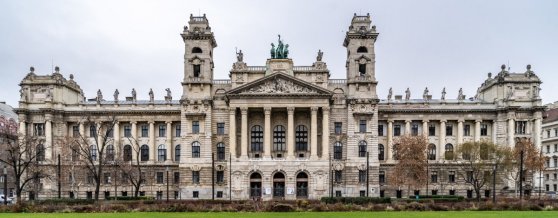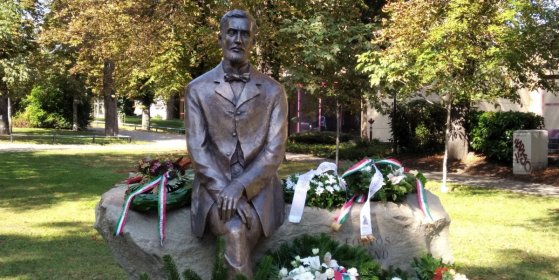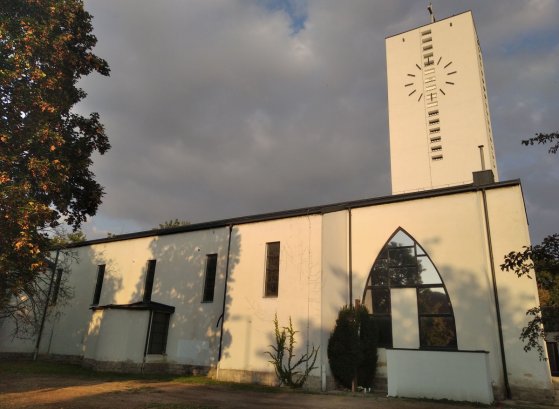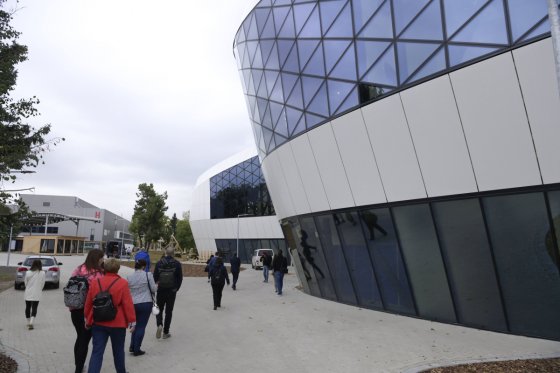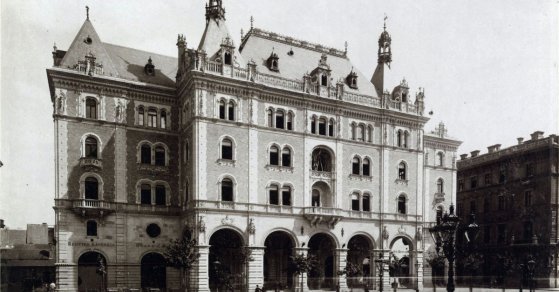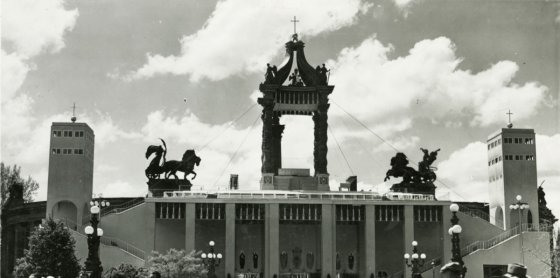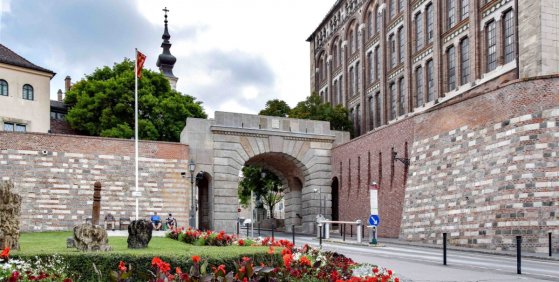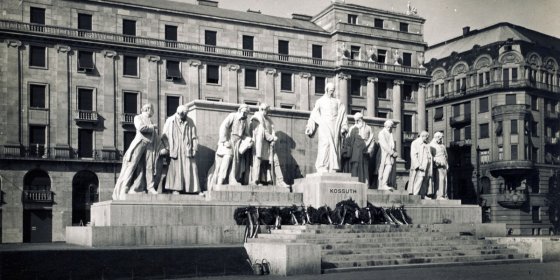 The „intertwined history” of the bridges and the city of Budapest
Which ideas and events have shaped the fate of bridges of Budapest and the cityscape? Alongside many other interesting facts, this question is also answered this newly published book by the Budapest City Archives, which introduces the history of bridges in Budapest.
The „intertwined history” of the bridges and the city of Budapest
Which ideas and events have shaped the fate of bridges of Budapest and the cityscape? Alongside many other interesting facts, this question is also answered this newly published book by the Budapest City Archives, which introduces the history of bridges in Budapest.
Péter Bodó
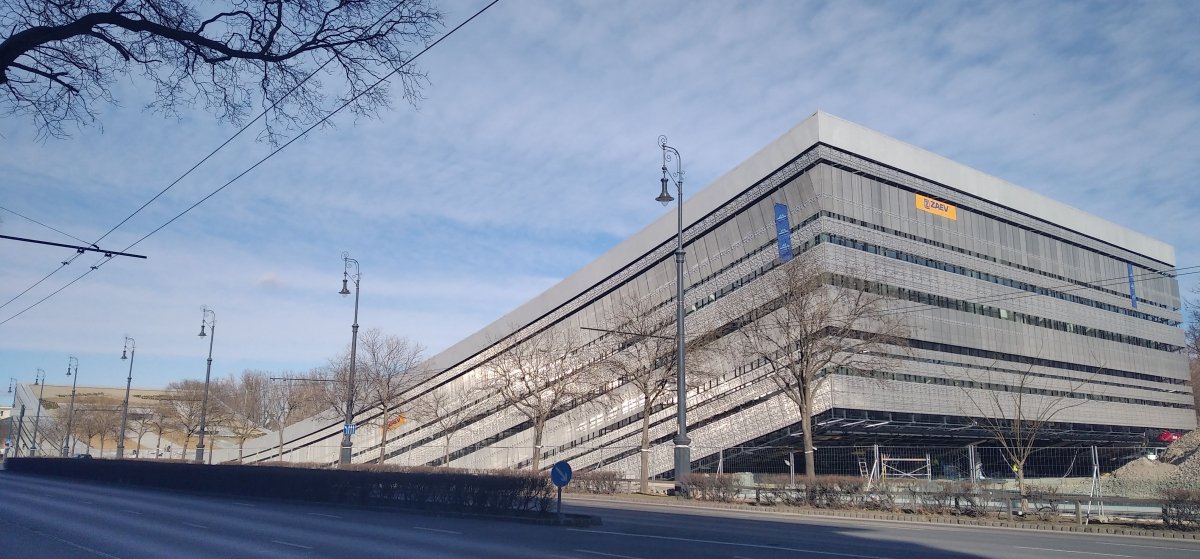 The new Museum of Ethnography will be handed over in the spring
The new Museum of Ethnography will be handed over in the spring
February 6, 2022 at 9:00 AM
There have been huge changes in City Park recently that are not over yet. The huge car park behind the Kunsthalle (Műcsarnok) has been occupied by an impressive building, the new Museum of Ethnography. It attracts attention not only with its sheer size but also with its shape - all while respecting the park nature of its surroundings. In the spring, anyone will be able to go up to the top of the building, but for the time being, only a few of those interested had the opportunity to do so.
The former diplomatic residence in the Castle was demolished
February 3, 2022 at 9:00 AM
The demolition of the former diplomatic residence, the later Burg Hotel, was completed this week in the Szentháromság Square in Buda Castle, leaving only piles of rubble. The building, designed by György Jánossy and László Laczkovics and completed in 1981 is planned to be replaced by a house that will evoke the exterior of the buildings originally demolished after World War II.
Two Faces of a Building - The Heinrich Courtyard in Józsefváros
January 26, 2022 at 10:30 AM
On the opposite side of Üllői Road, opposite the Museum of Applied Arts, stands a neo-baroque tenement house, built by the iron merchant Ferenc Heinrich. Not far from it, and in the neighbouring Mária Street, lies the long facade of an Art Nouveau warehouse. One would not even think that the two had anything to do with each other, however, both were built by the Heinrich iron merchant family. The latter was completed by 1912, meaning it could begin to be filled with goods a hundred and ten years ago.
Once a world-famous factory in Budapest, now a hardly known company - The Hungarian Optical Works
January 19, 2022 at 10:00 AM
Just 100 years ago, in 1922, the Süss Nándor Institute of Precision Mechanics and Optics PLC was named after its founder. It was the plant which later became one of the largest and world-famous factory in Budapest. The factory, which has been operating under the name Hungarian Optical Works since 1939, once dominated the area around Csörsz Street, but today, only the name MOM, and the community centre reminds us to the former factory.
The 130-metre-high Tower of Hungarian History would have been built on the banks of the Danube in Pest
January 8, 2022 at 10:30 AM
The new headquarters of MOL will be completed later this year, and will be the first skyscraper in the capital. Together with the technical equipment placed on the roof, a 143-metre high-rise building will be constructed in Buda, in the Lágymányos District, but a building of a similar size was planned on the banks of the Danube in Pest between the world wars. In the plan of Jenő Lechner's Tower of Hungarian History, the everyday tasks of a tourist service centre and the sublime functions of a national pantheon appeared at the same time.
The last coronation - Charles IV became a Hungarian king 105 years ago
December 30, 2021 at 9:00 AM
During the bloodthirsty years of World War I, the difficult fate of the Austro-Hungarian Empire was compounded by another blow at the end of 1916: Emperor and King Franz Joseph I died. After sixty-eight years of rule, he passed away on 21 November 1916. He was succeeded by his grandnephew, Archduke Charles of Habsburg-Lorraine, who had been crowned king on 30 December 1916, 105 years ago.
The other hotel in Budavár - The former Burg Hotel and what was before it
December 9, 2021 at 2:00 PM
The most significant hotel in Buda Castle is undoubtedly the Hilton. This is explained not only by the world-famous brand, but also by the size and panoramic location of the building. Barely a hundred metres away, however, the small Burg Hotel held the competition with its big rival for two decades. Like Hilton, it is a modern building as well, its predecessors destroyed in World War II. But now the area is once again undergoing a change: a partial demolition permit has been issued for the building, and work has already begun on the interiors.
The Church of Arts - The building of the Museum of Fine Arts is 115 years old
December 5, 2021 at 11:00 AM
The Museum of Fine Arts is one of the most famous buildings in the country, without which the Heroes' Square is unimaginable. Yet this was erected the latest, it is ten years younger than the Kunsthalle opposite. However, its size and seriousness make this fact forgettable - and of course it is no longer young, it was opened to the public 115 years ago. In this context, Pestbuda presents its history and beautiful interiors, which house one of the richest art collections in Central Europe.
Fabulous East in Budapest at the turn of the century - Turkish architecture and places of amusement
December 4, 2021 at 9:30 AM
The thousandth anniversary of the Hungarian conquest of the Carpathian Basin provided the basis for the creation of many famous works of art and buildings, as a nation proud of its past lived in an economic heyday. However, the memories of high culture were only a slice of the diverse entertainment industry at the time, and the wider audience also longed for lighter entertainment, which was served by a number of places of amusement. It is interesting how similar they were in some respects.
The last stop of a renovation program: the handover of the Széll Kálmán Square gateway
December 3, 2021 at 8:00 AM
Széll Kálmán Square has undergone huge changes in recent years and although we have become accustomed to the modern environment, the renovation program actually ended only on Thursday: the gateway connecting the square with Krisztina Boulevard was handed over. The passage was short, but the construction was all the more complicated. Still, it was worth it, as it is another, very big step towards an accessible Budapest.
Between the Riding Hall and the Royal Guard - The role of the Csikós Court and the Stöckl Stairs in the Castle
November 28, 2021 at 9:00 AM
The western side of the Buda Castle has been loud from truck noise in recent years, as the former Royal Riding Hall and the Royal Guard building have been rebuilt as part of the National Hauszmann Program. These beautiful buildings have been completed before, and more recently they have been working on the Csikós Court that surrounds them, which was finally opened to the public in mid-September. We invite the Reader for a short journey, during which we will pass through the court, and the end of our journey will be the also rebuilt, charming Stöckl Stairs.
A hidden little street in the Castle - the Babits Mihály Promenade is 85 years old
November 17, 2021 at 4:30 PM
Babits Mihály Promenade is one of the most romantic streets in Budapest. It runs along the castle wall of Buda, and although the tourist traffic is huge nearby, only a few are walking in this relatively hidden area. Yet it was created in the 1930s precisely because it opened up a magical panorama of the entire city, and it was hoped it would attract foreign visitors like sugar.
The wedge of Szabadság Square is renewed - The Hungarian National Bank regains its original splendour
November 8, 2021 at 9:00 AM
The Hungarian National Bank was established in 1924, and the institution's well-known building in Szabadság Square was actually handed over in 1905 as the headquarters of the Austro-Hungarian Bank in Budapest. The economic flourishing of the period of dualism is also reflected in the prestigious building designed by Ignác Alpár, which will hopefully be brought to the fore by the reconstruction that will begin soon. During the renovation of the monument, the original conditions will be restored in the interior and the whole building will be modernised and made energy-efficient.
The pentagon of the Buda bank of the Danube - Pestbuda visited the completely renovated church of Szilágyi Dezső Square
October 21, 2021 at 10:30 AM
The Szilágyi Dezső Square Reformed Church was taken over by the faithful on Palm Sunday of 1896, so this year it celebrated the 125th anniversary of its construction. The Parish kept track of the anniversary and two years ago began the interior renovation of the building, which was largely completed in March. Due to the month of architecture - and as the Reformation Day approaches - Pestbuda was able to see what the new interior became like.
A worthy plot of land for the Palace of Justice has been found opposite the Parliament - The building of the Curia is 125 years old
October 20, 2021 at 9:00 AM
Recently, the name of Alajos Hauszmann has been in the public consciousness, mainly as an architect of the Royal Palace, due to the constructions in the castle, but many other works are also connected to his name in Budapest. One of his most notable and most successful works is the building of the Curia in the Kossuth Square, which was handed over just 125 years ago, on 20 October 1896, in a ceremonial setting, as part of the millennium celebrations.
A statue was erected for Loránd Eötvös, who served universal science with a Hungarian heart
October 6, 2021 at 2:00 PM
One of the most famous Hungarian scientists is immortalised in many reliefs and busts in Budapest, but previously he only had one life-sized statue: it was erected in 2016 in Pest, in front of the central building of the University named after him. Now a new statue has been placed in the Gesztenyés Garden in the 12th District of Buda, and the place is closely connected to him as well: his most famous invention, the torsion pendulum was produced in the predecessor of the Hungarian Optical Works operating next door.
Modern, yet traditionally Hungarian - the Church of St. Michael in Albertfalva is 80 years old
September 29, 2021 at 10:00 AM
September 29 is the feast of St. Michael the Archangel, the most popular, most often depicted angel. He was elected patron of several churches in Budapest, the youngest of which was the parish church of Albertfalva, consecrated in 1941. The modern, yet traditionally Hungarian building has recently been expanded with a new community house.
The new Hungexpo lures everyone in
September 20, 2021 at 7:30 PM
One of the largest and most modern congress and conference centres in Central Europe has been established in Budapest, on the territory of Hungexpo. The existing buildings have been renovated and completely new ones have been built, which impress the visitors not only with their equipment but also with their appearance.
World-famous architects in Budapest
September 19, 2021 at 9:30 AM
In 1930, Budapest hosted the 12th International Congress of Architects, which was attended by architects from all over the world. As an accompanying event to the triennial event, a large-scale architectural design exhibition was held in Budapest, which was open to the public between the 6th and 16th of September 1930.
A little Rome in Budapest - The main altar of St Peter's Basilica was built in Heroes' Square in 1938
September 8, 2021 at 10:00 AM
The 52nd International Eucharistic Congress is taking place in Budapest these days, which one of the largest events in the Catholic Church. It is always a great honour for the city to host the event, and Budapest is lucky enough to host it for the second time. For the first time, in 1938, the organisers expressed their gratitude to the Vatican for the opportunity by building the main altar of St Peter's Basilica in Heroes' Square.
The newest Vienna Gate is eighty-five years old
September 2, 2021 at 9:00 AM
Eighty-five years ago, in 1936 the Vienna Gate of the Buda Castle was rebuilt. The plan had already been conceived six years earlier, but because of the economic crisis the financial backing could only be secured for that time. The occasion for the construction was the two hundred and fiftieth anniversary of the recapture of Buda, which was on 2 September 1686.
The Memorial Stone of Heroes was torn down 70 years ago
August 26, 2021 at 11:00 AM
In the shadow of the Millennium Monument, another work is hidden in the Heroes' Square. The Memorial Stone of Heroes symbolises a mass grave, originally erected in 1929, in memory of the soldiers of the First World War resting in anonymous graves, but it was not mourning that was its primary message, but mobilisation against the changing millennial boundaries. The memorial stone was demolished in 1951 but re-erected in the spring of 1956 and then in 2001, in a different form and with new messages.
The migration of the Kossuth statue in front of the Parliament - They wanted to erect the monumental memorial opposite the main entrance of the Parliament
August 22, 2021 at 11:00 AM
The square in front of the Parliament has been called Kossuth Square since 1927, since the statue of the great statesman was inaugurated that year. The designation of its exact location provoked lengthy debates, and the finished work was tentatively erected at several points of the square by the time it reached its final location.
More articles
 The „intertwined history” of the bridges and the city of Budapest
Which ideas and events have shaped the fate of bridges of Budapest and the cityscape? Alongside many other interesting facts, this question is also answered this newly published book by the Budapest City Archives, which introduces the history of bridges in Budapest.
The „intertwined history” of the bridges and the city of Budapest
Which ideas and events have shaped the fate of bridges of Budapest and the cityscape? Alongside many other interesting facts, this question is also answered this newly published book by the Budapest City Archives, which introduces the history of bridges in Budapest.
 The Bridge Report, which brought a turning point in the history of Budapest
A travel report that changed the history of Pest and Buda, as well as Hungary. The little book contributed to the change of half a thousand years of legal customs and the implementation of an investment of unprecedented size and technical quality. This book was The Bridge Report [Hídjelentés in Hungarian].
The Bridge Report, which brought a turning point in the history of Budapest
A travel report that changed the history of Pest and Buda, as well as Hungary. The little book contributed to the change of half a thousand years of legal customs and the implementation of an investment of unprecedented size and technical quality. This book was The Bridge Report [Hídjelentés in Hungarian].
 Drama on the university wall - The heroic monument was planned 95 years ago
In the constant hustle and bustle of the Egyetem Square in Pest, the students may not even notice the monument that decorates the short section of wall between the church and the central building of ELTE. However, it commemorates their predecessors, the heroes who fought for their country in World War I, and those who heroically helped them. The first design of the dramatically collapsing soldier was born in 1928, ninety-five years ago.
Drama on the university wall - The heroic monument was planned 95 years ago
In the constant hustle and bustle of the Egyetem Square in Pest, the students may not even notice the monument that decorates the short section of wall between the church and the central building of ELTE. However, it commemorates their predecessors, the heroes who fought for their country in World War I, and those who heroically helped them. The first design of the dramatically collapsing soldier was born in 1928, ninety-five years ago.

